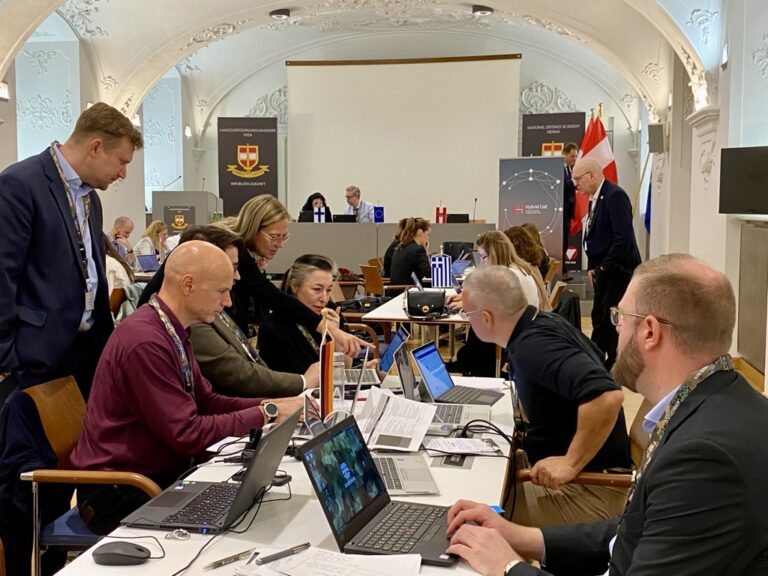In hybrid influencing, hostile state or non-state actors deploy and combine a broad portfolio of means to interfere and covertly gain influence in the target state and society. Examples include the dissemination of disinformation, election interference, instrumentalized migration, and the exploitation of identity issues to drive wedges in societies.
Hybrid influencing is used in the priming or early phase of the escalation spectrum of hybrid threat activity, aiming to induce the target state to make decisions that benefit the aggressor.
Learn about the topics under this theme
Related news and publications

JEF course sharpens understanding of hybrid threats among defence planners

 Hybrid CoE Research Report 13
Hybrid CoE Research Report 13Strings attached: China’s narrative influence in Sub-Saharan Africa

Western Balkans in focus at countering disinformation wargame and conference in Vienna

 Hybrid CoE Working Paper
Hybrid CoE Working Paper Hybrid CoE Working Paper 32: Russia’s hybrid threat tactics against the Baltic Sea region: From disinformation to sabotage

 Hybrid CoE Working Paper
Hybrid CoE Working Paper Hybrid CoE Working Paper 30: Security and geopolitics in the Arctic: The increase of hybrid threat activities in the Norwegian High North

Looking to secure elections? Strengthen cyber defences and provide information security training for citizens and politicians alike

 Hybrid CoE Research Report
Hybrid CoE Research Report Hybrid CoE Research Report 12: Countering hybrid threats to elections: From updating legislation to establishing collaboration networks

 Hybrid CoE Working Paper
Hybrid CoE Working Paper Hybrid CoE Working Paper 29: Cause for concern: The continuing success and impact of Kremlin disinformation campaigns
Related functions
Get to know all our themes
The Centre focuses on diverse aspects of hybrid threats – from soft power to military means, and from policy to practical questions.






